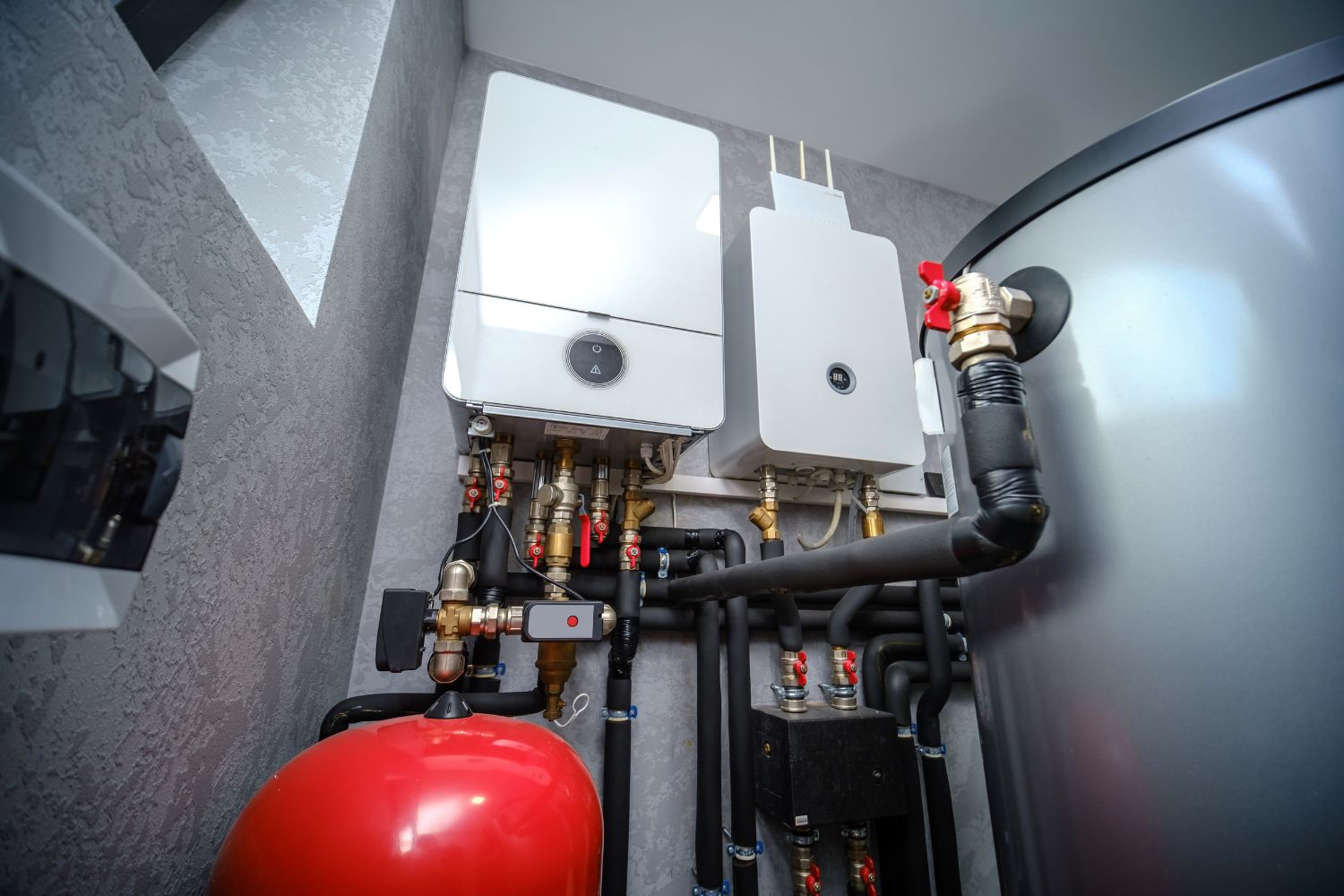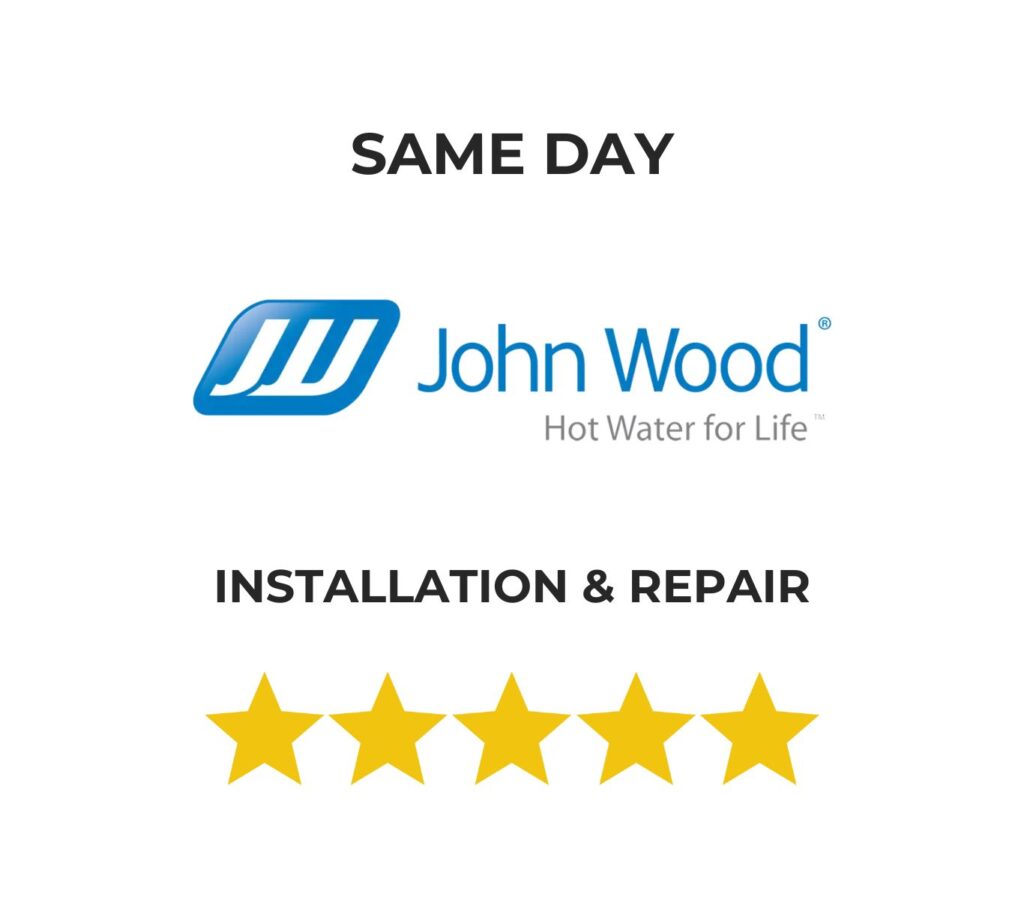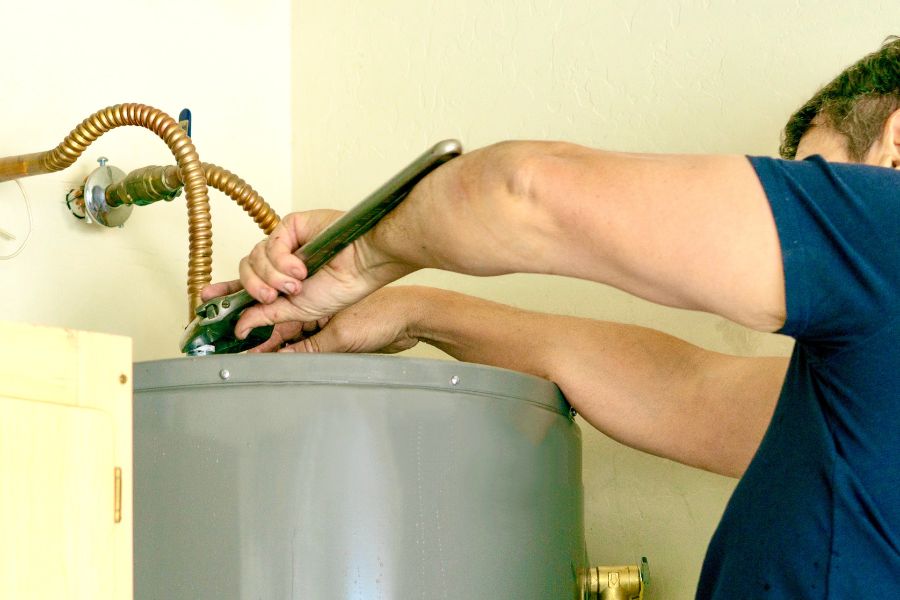
SERVICING: CALGARY & THE CMR
JOHN WOOD WATER
HEATER REPAIR
Looking to upgrade, repair or replace your home’s hot water tank? One Stop HVAC can accommodate you, whatever your needs. If you want to install a new tank, or repair your existing John Wood water heater in Calgary, call us today to schedule your appointment!
Same / Next Day
Service 24/7
Rating 5/5
Google Reviews
Licensed TSSA
Technicians
Served Over 1000
Local Residents
Get Your Free
Estimate Today
Great Prices
Guaranteed

24/7 Emergency John Wood Water Heater Repair
Experiencing a disruption in your hot water supply can turn your day upside down. One Stop HVAC is on standby to provide you with John Wood water heater repair services in Calgary. Our skilled technicians are proficient in diagnosing and resolving any issues, ensuring your water heater returns to optimal performance swiftly.
Whether the solution requires a simple tweak or a more comprehensive repair, we’re committed to ensuring your John Wood water heater, whether it’s a high-efficiency gas model, an electric unit, or a tankless system, delivers consistent hot water and operates with maximum energy efficiency. Count on us to maintain the seamless operation of your water heating system.
Condensation in gas water heaters occurs when airborne water vapor cools and turns into liquid upon hitting surfaces cooler than the dew point—the temperature at which vapor becomes liquid.
This often happens due to low incoming water temperatures that cool the water heater’s pipes and heat exchange surfaces. When the heater’s main burner ignites, its hot gases condense on these cooled surfaces.
Although it might look like a leak, condensation is normal and can produce about a half-gallon of water per hour of operation. Newer water heater models tend to condense more than older ones because they are designed to be more efficient, extracting more energy from the burner flame. This efficiency results in lower flue gas and tank temperatures, making condensation more likely as they are closer to the dew point temperature.
Depending on the type and the model, a John Wood water heater’s warranty will last anywhere from 6 to 10 years.
To maintain your water heater and ensure its longevity, it’s advisable to drain and flush it every six months to remove any sediment buildup. If the water heater will be unused for an extended period, draining it is also recommended.
For Gas-Fired Water Heaters:
- Turn off the gas using the manual shut-off valve.
- Close the cold water inlet valve.
- Open a nearby hot water faucet to alleviate pressure.
- Connect a hose to the drain valve and lead it to a suitable drain. Ensure the hose can withstand temperatures up to 94°C (200°F) to prevent damage.
- Open the drain valve, allowing all water to drain from the tank. Flush the tank with water as needed to clear out sediment.
- After draining, close the drain valve, refill the tank, and restart the heater following the manufacturer’s instructions. If you’re shutting down the heater for a while, leave the drain valve open.
- Note that condensation during refilling is normal and should not be mistaken for a leak.
For Electric Water Heaters:
- Make sure to turn off the power supply to the heater before starting to prevent damage to the heating elements.
The draining process for electric heaters mirrors that of gas heaters, including turning off the water supply, connecting a hose for drainage, and opening a hot water tap to allow air into the tank. After draining and flushing until the water runs clear, refill the tank, ensuring no air pockets remain, and check for leaks before restoring power.
Regular maintenance, including draining and flushing, helps in preventing sediment accumulation, which can affect the efficiency and lifespan of your water heater. Always consult your water heater’s manual for specific instructions related to your model and take necessary safety precautions when performing maintenance tasks. If you have any concerns, please reach out to us at One Stop HVAC and we can take it from there.
Here’s how you can interpret the serial number:
- The serial number typically begins with a letter, followed by numbers.
- Ignore any leading letter and focus on the first four numbers.
- The first two digits indicate the year of manufacture.
- For heaters made before 2008, the next two digits represent the month of manufacture.
- For heaters manufactured after 2008, the following two digits indicate the week of the year it was made.
Example:
If the serial number is U0106413635, the heater was manufactured in June 2001.
To check whether your water heater is still under warranty, you should visit John Wood’s warranty validation page. Remember, warranties might differ based on the application, with residential use typically receiving more extended coverage compared to commercial use.
Please note, it’s essential to consult the specific documentation or website for your John Wood water heater to ensure accurate interpretation and to find the most current warranty information.
The milky or cloudy appearance in your water is typically caused by gases such as oxygen, chlorine, carbon dioxide, and hydrogen sulfide dissolving in the water. The solubility of these gases decreases as the water pressure increases, leading to the formation of tiny gas bubbles that give water a cloudy effect. This phenomenon is temporary, and the water will clear up starting from the bottom of a container as the gases escape into the air. Installing aerated faucets can help reduce the appearance of milky water by allowing the gases to escape more readily as the water flows out of the tap.
Expert John Wood Water Heater Installation
Have a premium product installed by experts with our John Wood water heater installation services. One Stop HVAC offers personalized solutions that cater to the unique requirements of your home, whether you’re considering an upgrade or need a completely new setup.
Our experienced professionals ensure a smooth installation process, fitting your John Wood water heater — be it a high-efficiency gas, electric, tankless, or a model equipped with innovative storage tanks — perfectly into place. Enjoy the superior performance and convenience of John Wood water heaters. Let us elevate your water heating system with the dependable quality of John Wood.

Correctly sizing a water heater is essential to avoid problems like running out of hot water or premature system failure. Key factors include storage capacity and recovery rate, which determine how much hot water is available and how quickly it can be replenished. An undersized unit may lead to issues like excessive condensation, rust, inadequate hot water supply, and early tank failure.
Determining the best water heater size for your needs can be tricky. One Stop HVAC is ready to assist, offering expertise to ensure you get a water heater that matches your demands for efficiency and reliability.
Your John Wood electric water heater’s element could be one of the following types: strap-on, plug-in, bolt-on (also known as square flange), or screw-in. To select the correct replacement element, you should visually inspect the current element in your heater. This ensures compatibility and proper fit for efficient operation.
An experienced HVAC team can install a John Wood tankless water heater relatively easily. That being said, in some cases, changes to your gas line or ventilation situation are required, making it a challenging installation. You are encouraged to hire professionals.
While it’s possible to replace elements yourself, if you’re asking this question, you might be better off asking for help. Get in touch with our team and One Stop HVAC today and we’ll take it from there.
Introducing water softeners to tackle hard or moderately hard water is increasingly common, yet it may unintentionally accelerate wear on your water heater’s protective anode rod. This component, crucial for preventing tank corrosion, may wear out faster due to the softening process, potentially shortening your water heater’s lifespan. Therefore, it’s advisable for those using water softeners to inspect the anode rod regularly and replace it preemptively to ensure the longevity of their water heater.
John Wood Water Heater Flash Sequence Codes
Water Heater is in stand-by mode
Water heater is in heat mode
System error – Cycle power
Ignition Failure
Pressure switch fails to open
Pressure Switch fails to close
Line/Neutral Polarity failure
ECO Failure
False flame
Vacation Mode Active
Please note that these LED error codes are general and may not cover every possible variation. Always refer to your John Wood water heater manual or consult a professional technician for accurate diagnosis and resolution.